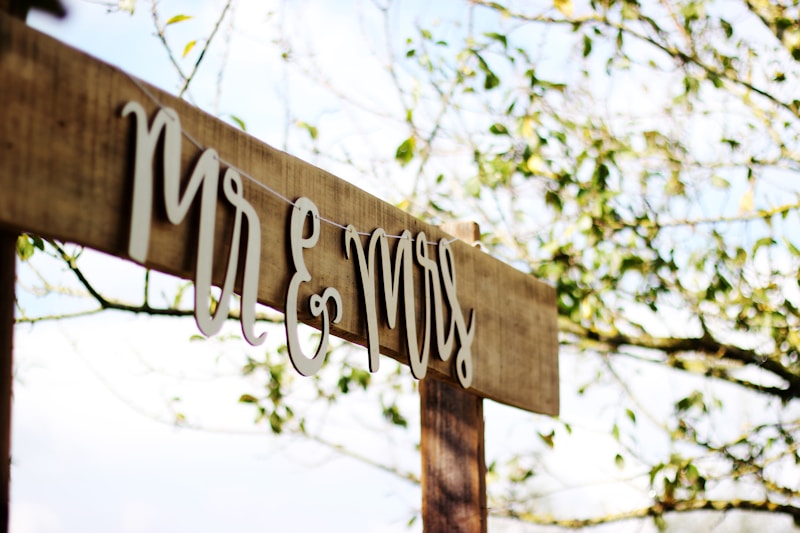Insights into Wedding Budget Breakdowns: A Comprehensive Guide
Insights into Wedding Budget Breakdowns: A Comprehensive Guide
Planning a wedding can be both thrilling and overwhelming, especially when it comes to budgeting. Understanding where to allocate your funds can make a significant difference in ensuring your special day goes smoothly. This article provides valuable insights into wedding budget breakdowns, helping couples plan effectively while considering every detail of their big day.
Understanding Wedding Budget Breakdowns
A wedding budget breakdown is typically a comprehensive outline that showcases how much money will be allocated to various aspects of the wedding. By breaking down your overall budget into specific categories, you can prioritize your spending and make informed decisions. Here's a typical breakdown of a wedding budget:
| Category | Percentage of Total Budget |
| Venue | 30% |
| Catering | 25% |
| Photography/Videography | 10% |
| Attire (Bride and Groom) | 10% |
| Flowers and Decor | 10% |
| Entertainment | 5% |
| Stationery and Invitations | 2% |
| Miscellaneous (Gifts, Transportation, etc.) | 8% |
This table provides a straightforward view of how you might allocate your wedding budget, based on common practices. However, it’s important to customize this breakdown according to your preferences and priorities.
The First Steps in Budgeting
Before diving deeper into detailed categories, here are the first steps you should take when starting your wedding budget:
- Set a Total Budget: Determine how much you can comfortably spend without financial strain. This could be based on savings, contributions from family, or loans.
- Prioritize Your Categories: Identify which elements are most essential to you. Is it having a luxurious venue, gourmet catering, or perhaps a renowned photographer? Rank your priorities to guide your spending.
- Research: Look into average costs within your area for various wedding services to better inform your budget allocations.

The Venue: The Foundation of Your Budget
The venue often takes the largest chunk of the wedding budget. This includes the location for both the ceremony and reception. The cost can vary greatly depending on the region, season, and the day of the week (weekend versus weekday). Aim to visit various venues, ask for detailed pricing information, and consider additional costs like rental fees or catering minimums.
Catering: Feeding Your Guests
Catering costs can be another significant expense. A full-service catering company might charge per plate, while a buffet style could be more cost-effective. Don't forget to include costs for beverages, cake, and any extras like late-night snacks. Consider if your venue has catering partnerships, as that might offer you packages that save money.
Photography and Videography: Capturing Moments
Investing in quality photography and videography is essential. These professionals will capture moments that you'll cherish for a lifetime. Review portfolios, ask for referrals, and ensure you understand the costs involved, including potential travel fees if your wedding is in a remote location. Budgeting about 10% of your total budget for this category is recommended.
Attire: Looking Your Best
The bride’s gown and the groom's attire also hold significance in your total expenses. Weddings can often turn into fashion shows, so ensure you set a reasonable budget. Consider options like rental services, sample sales, or outlets to save money while looking stunning. Aim to allocate about 10% of your budget for attire.
Flowers and Decor: Setting the Mood
Floral arrangements and decor can transform your venue into a breathtaking space. While it can be tempting to go extravagant with flowers, consider options that suit your budget. Local and seasonal flowers often reduce costs. Budgeting approximately 10% of your total should help you achieve a beautiful setting without overspending.
Entertainment: Keeping It Fun
Live bands can be more costly than DJs, but each brings a unique touch to your wedding. Depending on your atmosphere, whether elegant or casual party vibes, it is crucial to find the right entertainment. Allocating around 5% of your budget typically suffices.
Stationery and Invitations: Making an Impression
From save-the-dates to thank-you cards, stationery costs can add up. Considering digital options can save considerable amounts of money while still making an impression. Reserve about 2% of your budget for these essentials.
Miscellaneous Costs: The Unexpected
Never forget to budget for those surprise costs that may surface during planning. This includes tips for vendors, transportation, and gifts for your bridal party. Set aside around 8% for miscellaneous expenses to avoid financial stress as your wedding day approaches.
Final Thoughts: Budgeting for Your Dream Wedding
In conclusion, understanding and breaking down your wedding budget is crucial for successfully planning your big day. Tailor the suggested percentages to fit your unique needs, communicate openly with your partner, and be flexible with your choices. Keeping an eye on priorities will help ensure that your wedding remains a joyful celebration rather than a financial burden.
Remember, planning a wedding should be fun, not stressful. Stick to your budget, but don’t forget that your wedding is about love and commitment, not just about spending money. Enjoy the process and make your dream wedding a reality!
Key Takeaways:
- Customize your budget breakdown based on your unique preferences.
- Research local costs and prioritize key elements.
- Allocate funds wisely but remain flexible.
- Involve your partner in decisions to make planning enjoyable.
